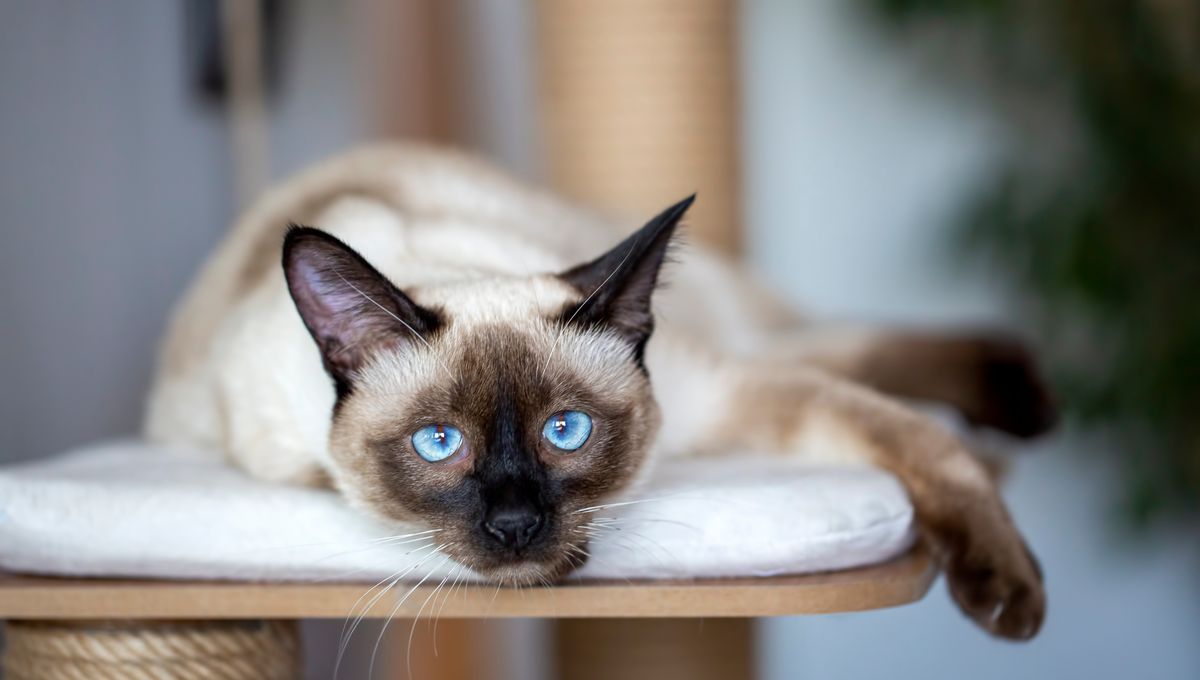
In 1975, a paper was published in the prestigious journal Physical Review Letters that was co-authored by a cat. This wasn’t a joke, at least initially, but rather a response to one of the journal’s policies and the challenges of making changes before the days of word processing technology.
The tale of F.D.C. Willard, feline published physicist
Professor Jack Hetherington was a respected member of the physics department at Michigan State University when he wrote a paper on the unusual behavior of the isotope helium-3. He planned to submit it to Physical Review Letters, but a colleague he showed it to noted he had used “we” instead of “I” throughout. Some journals accepted this sort of equivalent of the “royal we” for single-author papers, but Physical Review Letters did not.
Hetherington had the choice of retyping, adding another author, or perhaps submitting to a less demanding journal. Today this would be easy, but (shocking as the under-50s may find it) search and replace options did not exist in the 1970s. The paper is less than three pages long, but the equations and graphs probably made redoing it a substantial project. The first-person plural appears over 20 times in the text, so it’s not like a little liquid paper could have fixed it.
Hetherington chose the second option, but didn’t want to share credit with a non-contributing colleague, so he chose to award co-authorship to someone he would never have to compete with for a promotion: his cat. Aware that Chester, the Siamese with which he co-habited (ownership being a tricky question with cats), was well known enough among his colleagues that they might catch on, he chose a pseudonym. Chester’s father’s name was Willard, so Hetherington used that as the surname for his co-author and added the initials F.D.C for Felis domesticus Chester.
The deception might have gone undetected if the paper had not proven an influential and popular one. Other academics wanted to discuss it with an author, and in the days before email, that meant calling or visiting the department, where both Hetherington and Willard were listed as working. When told Hetherington was not in, one visitor asked to speak to Willard.
The MSU physics department, whose status in the field was acknowledged in Don’t Look Up almost 50 years later, was not in the practice of employing cats, and had no F.D.C. Willard on the books. Confusion ensued, until Hetherington owned up.
What was the paper about?
Willard’s story has been told many times, and he even has a Wikipedia page, but the content of his paper is usually skipped over. Titled Two-, Three-, and Four-Atom Exchange Effects in bcc 3He, the name tells the story, at least if you know about the bizarre isotope 3He (more often written as helium-3).
Although it is a gas at anything close to room temperature, when cooled to temperatures near absolute zero (-273°C or -459.4°F), helium-3 appears to defy the laws of physics, becoming a superfluid. Rather like cats, now we think about it. Hetherington and Willard modeled the behavior when instead of trillions of helium-3 atoms, there were just two to four, and were able to explain some observations. They considered the circumstances both when the helium had been cooled to less than two thousandths of a degree above absolute zero to become solid, and at modestly higher temperatures.
The four-atom scenario is particularly complex because helium-3 can form four atom rings in either folded or planar form. The pair found their modeling of the folded ring’s behavior fit observations made by others, while the planar did not.
Among other conclusions from the calculations, they found that in a low or zero magnetic field, helium-3 can experience very rapid entropy increases without changing state from solid to liquid, or liquid to gas, another unusual characteristic.
The tail of the tale
Physicists have long had a fondness for cats, and people were charmed by the story. A pawprint referred to as his autograph on copies of the paper became highly prized at scientific conferences.
Far from being angry, the publishers of Physical Review Letters basked in the attention. On April 1, 2014 they announced that all papers with cats as authors would henceforth be open access.
MSU’s Chairman asked Hetherington to offer Willard a position at the university, perhaps as Visiting Distinguished Professor. Hetherington bestowed the title “Rodentia Predation Consultant.”
Hetherington made Willard a co-author on other papers and even published one in a French popular science journal with Willard listed alone. Sadly, cats’ life expectancies being shorter than humans, Willard’s academic career was cut short by dying in 1982. Hetherington now holds the position of Emeritus Professor.
Their joint paper has been cited at least 100 times, making it one of Hetherington’s more valued works, although not his greatest success.
Although cats have made many previous and subsequent contributions to physics, not all their collaborators have had the decency to give them authorship.
Perhaps dogs are less loved by scientists, or immunologists don’t have as much of a sense of humor as physicists. Either way, when subsequently prominent immunologist Dr Polly Matzinger listed her Afghan hound as a co-author on a paper she was banned from publishing in the Journal of Experimental Medicine thereafter. Perhaps they were just annoyed at having missed the fact that Galadriel Mirkwood was a more obviously made-up name.
As promised in 2014, Hetherington and Willard’s paper is open access in Physical Review Letters.
Source Link: What Was The Physics Paper Authored By A Cat About?